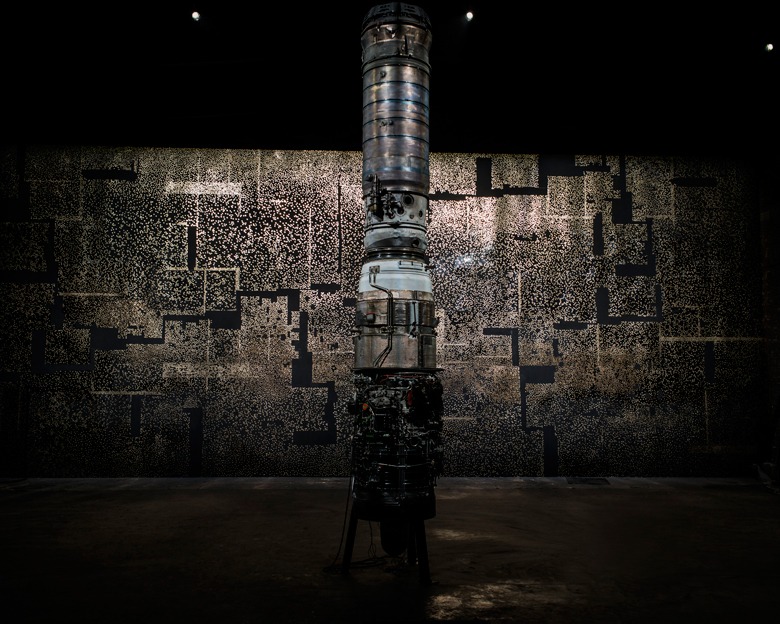Straight to Lebanon from the 57th Venice Biennale, artist and composer Zad Moultaka’s “SamaS” hopes to combat the region’s age-long cycle of violence through art.
 Photo: Marzio Emilio Villa
Photo: Marzio Emilio Villa
Curated by Emmanuel Dayde, the exhibition at Sursock Museum was first presented as part of the Lebanon Pavilion at the 2017 Biennale. Founded in 1895, the Venice Biennale is one of the most prestigious cultural platforms in the world.
Moultaka’s work presents a towering two-ton war plane engine as the centerpiece, used as a modern analogy for the ancient Babylonian statue of the Code of Hammurabi – a black basalt monolith carved in c. 1754 B.C. and considered to be among the first documented codes of law.
“At the top of the pillar is a figure of the Babylonian god of sun and justice Samas,” Moultaka says. “I began my project when I saw the motor of a war plane, which looked to me exactly like the Code of Hammurabi pillar and I thought how, with the same shape, people can both create and destroy civilization.”
The musical element of the work, composed by Moultaka and performed by the Antonine University Choir, is titled “SamaS Itima” (Dark Sun).
“It’s a chant using a language I made up based on Sumerian, as no one knows what Sumerian really sounds like,” Moultaka explains.
Behind the engine is a wall covered in 150,000 Lebanese coins (250 LBP), which Moultaka says is a metaphor for the Golden Calf, an Old Testament reference to a golden calf statue which was worshiped by the Israelites when Moses went to receive the Ten Commandments. In Moultaka’s case, he uses the tale to comment on modern day worship of wealth.
“SamaS” can be seen at Sursock Museum, Achrafieh until 25 June, from 10 am – 6 pm daily. The exhibition will then head to Finland, England, Norway and Australia.
Text: Maghie Ghali
Loading

